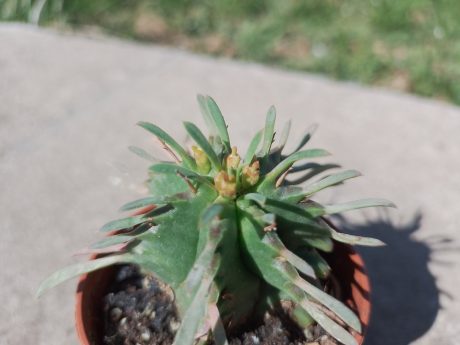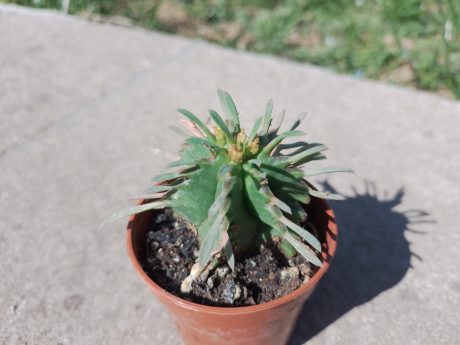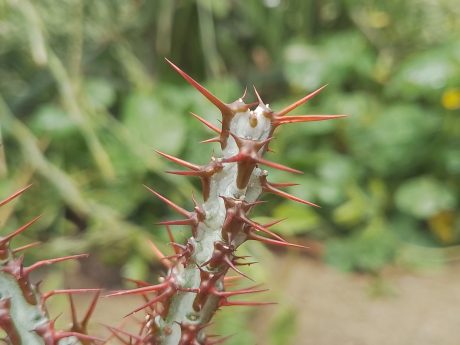The Euhorbia Pulvinata is known by the common name Euhorbia pin, referring to the shape of its spines and coming from South Africa. In its natural habitat if it is in a flat area where it has a lot of precipitation it can grow up to one meter per year, even in adverse winter situations (with snowfall, major cold…).
This plant is a succulent dioecious, it has to be male and female to reproduce. Depending on whether they have one sex or the other, they will be born directly from the mother stem (from which you got first) or they will be born separate and independent stems. In nature it forms an extremely large, compact mass composed of millions of small, sharp heads. It can be about two meters in height and width, and each specimen of these that is assembled adds one meter to the massification.
Now I’m going to describe just one example, so you can get an idea of what they are. It is a short, globose stem (but eventually becoming columnar), with between seven and ten ribs. Numerous branches emerge from the base, quite thorny, two to fifteen centimeters long by two to five in width. It has very small leaves that measure at most fifty millimeters long, linear, sharp and leave small white scars. It has a slightly sunken tip, a green body, and smaller triangles two to four millimeters deep between them, which eventually disappear.
The spines are modified, they can be white to purple, depending on the season we are in and are one to two centimeters long. The flowers will not emerge unless there has been a pollination between the male and female specimen before. When released, they are shaped like a cup, they can be purple red, dark red, or burgundy red. When the flower is withered, it leaves a fruit between four and five millimeters in diameter, and within this is the oval-shaped seeds two to three millimeters long, smooth and pale brown.
The irrigation in this Euphorbia is not complicated at all, we must not bear in mind that it needs a winter break, as it receives water throughout the year in its native area, so here we must try to adapt it as much as possible to its natural needs. We will therefore irrigate moderately, giving a little more water to the growing months (spring and summer) and space more irrigation during the cold, ensuring that the substrate is dry before returning water.
It can withstand temperatures of up to eight degrees negative, although we must, by precaution, avoid these very low temperatures. It needs direct sunlight not to affect its growth, but during the hottest hours it is better to provide some protection.
Finally, you have to be very careful when you manipulate it, because all species in Euphorbia when damaged release a milky substance known as latex that is highly toxic and poisonous apart from being very irritating, so when you have to touch it either to transplant it or to something else, you have to put on gloves. Next, clean your hands with soap and disinfectant and avoid touching your eyes.









Reviews
There are no reviews yet.